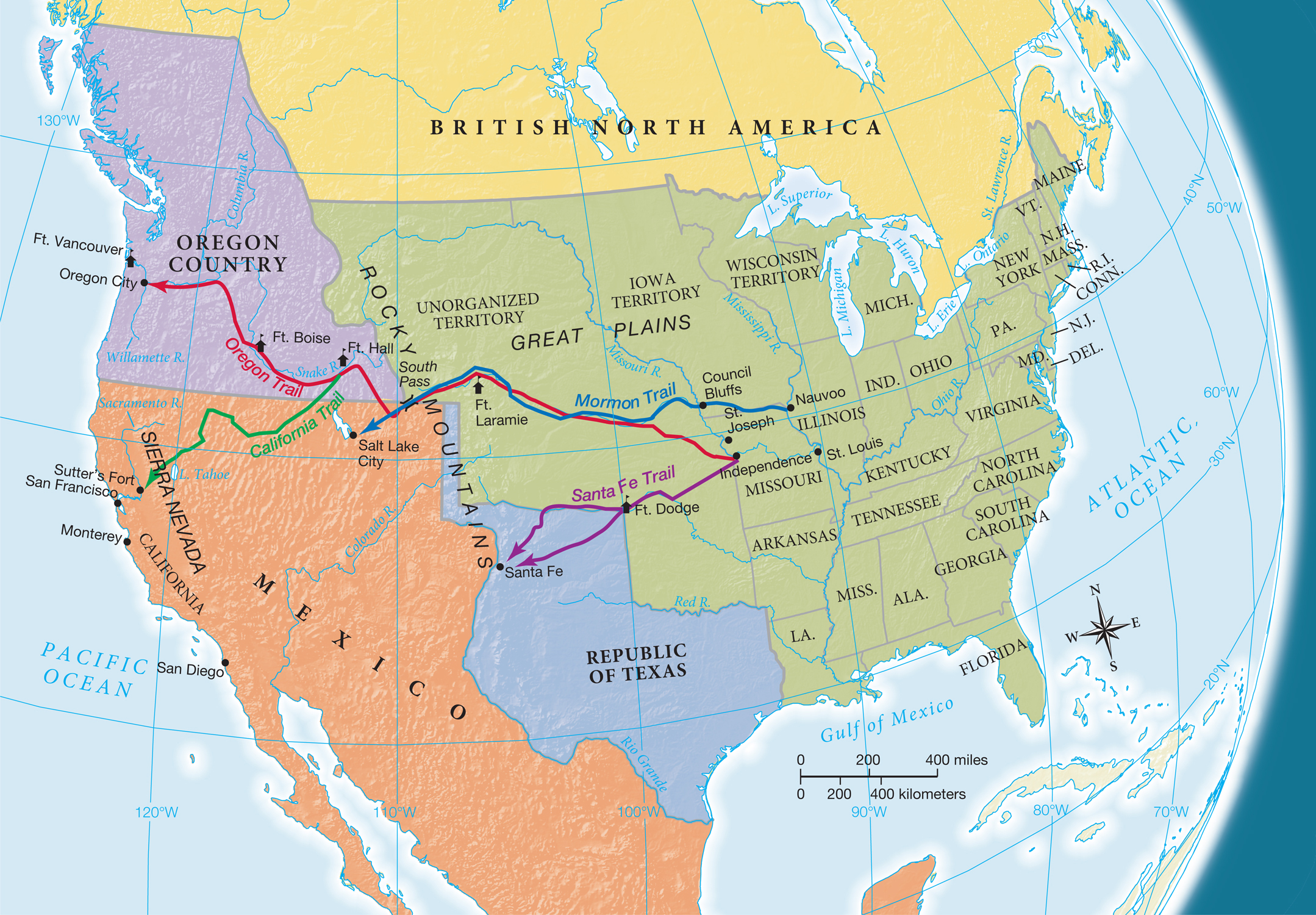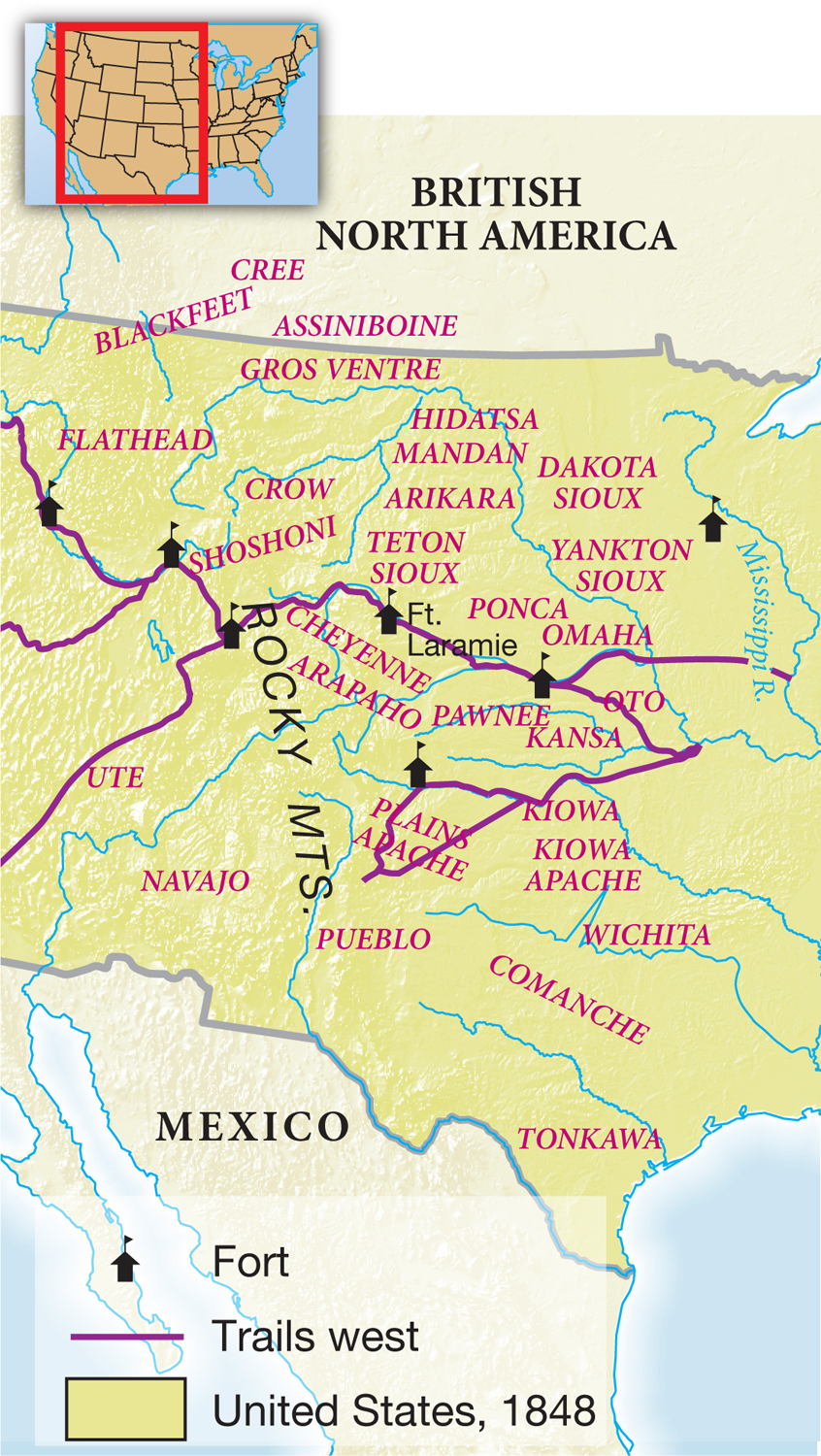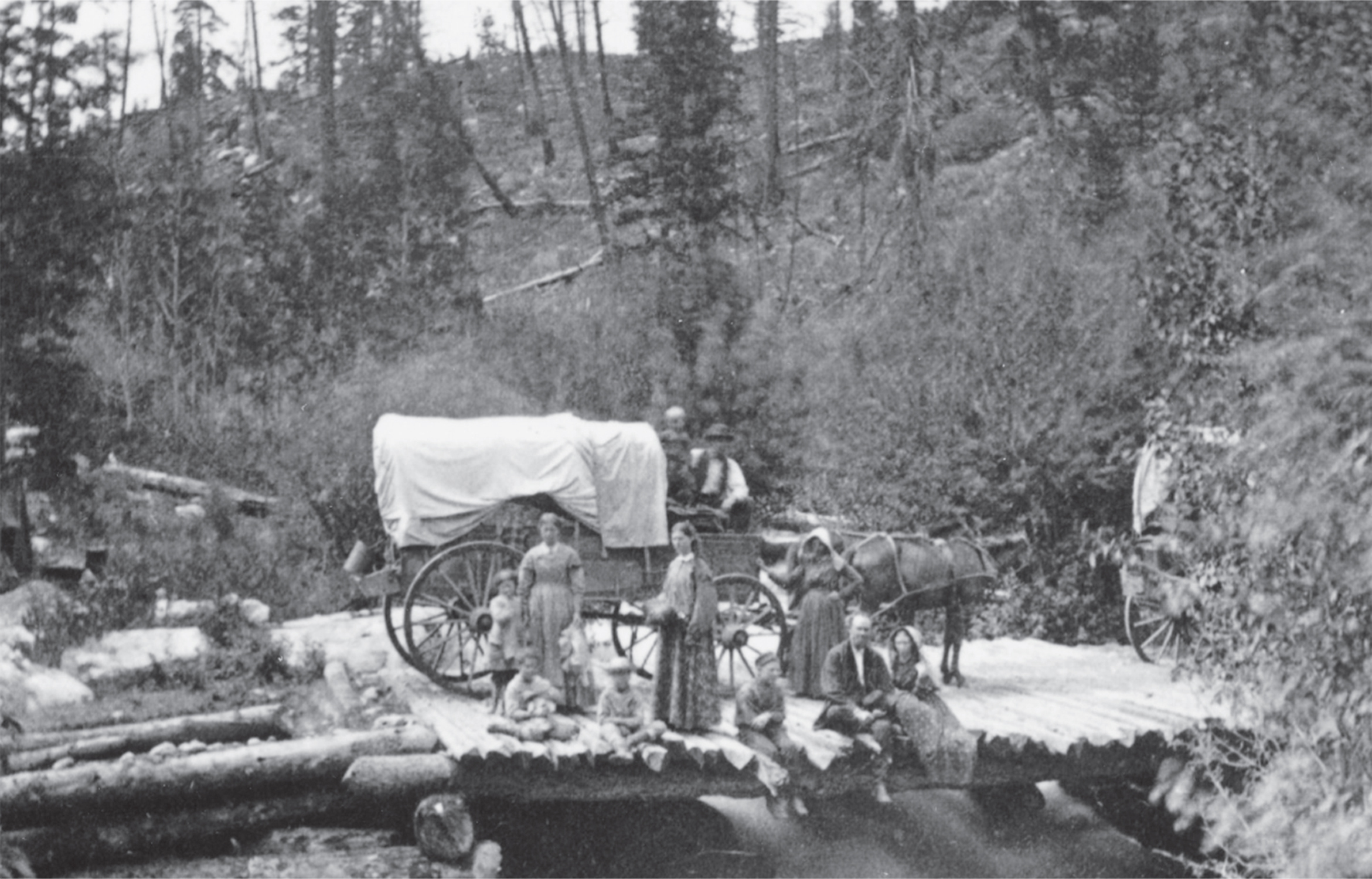Oregon and the Overland Trail
American expansionists and the British competed for the Oregon Country—
In the late 1830s, settlers began to trickle along the Oregon Trail, following a path blazed by the mountain men (Map 12.2). The first wagon trains headed west in 1841, and by 1843 about 1,000 emigrants a year set out from Independence, Missouri. By 1869, when the first transcontinental railroad was completed, approximately 350,000 migrants had traveled west in wagon trains.

Emigrants encountered the Plains Indians, a quarter of a million Native Americans scattered over the area between the Mississippi River and the Rocky Mountains. Some were farmers who lived peaceful, sedentary lives, but a majority—
Horses, which had been brought to North America by Spaniards in the sixteenth century, permitted the Plains tribes to become highly mobile hunters of buffalo. They came to depend on buffalo for nearly everything—


The Plains Indians struck fear in the hearts of whites on the wagon trains. But Native Americans had far more to fear from whites. Indians killed fewer than four hundred emigrants on the trail between 1840 and 1860, while whites brought alcohol and deadly epidemics. Moreover, white hunters slaughtered buffalo for the international hide market and sometimes just for sport.
The government constructed a chain of forts along the Oregon Trail (see Map 12.2) and adopted a new Indian policy: “concentration.” In 1851, government negotiators at the Fort Laramie conference persuaded the Plains Indians to sign agreements that cleared a wide corridor for wagon trains by restricting Native Americans to specific areas that whites promised they would never violate. This policy of concentration became the seedbed for the subsequent policy of reservations. But whites would not keep out of Indian territory, and Indians would not easily give up their traditional ways of life. Struggle for control of the West meant warfare for decades to come.
Still, Indians threatened emigrants less than life on the trail did. Emigrants could count on at least six months of grueling travel. With nearly two thousand miles to go and traveling no more than fifteen miles a day, the pioneers endured parching heat, drought, treacherous rivers, disease, physical and emotional exhaustion, and, if the snows closed the mountain passes before they got through, freezing and starvation. It was said that a person could walk from Missouri to the Pacific stepping only on the graves of those who had died heading west.

Men usually found Oregon “one of the greatest countries in the world.” From “the Cascade mountains to the Pacific, the whole country can be cultivated,” exclaimed one eager settler. When women reached Oregon, they found that neighbors were scarce and things were in a “primitive state.” One young wife arrived with only her husband, one stew pot, and three knives. Work seemed unending. “I am a very old woman,” declared twenty-